Abstract
The inhibition of stem elongation in dark-grown seedlings by blue light was studied with marking techniques and with a high-resolution, growth-measuring apparatus. Blue light rapidly suppresses growth in a variety of cultivated species. In some species, the inhibition persists only during the period of irradiation, after which time growth quickly returns to the high dark rate, whereas, in other species, the light response has an additional long-term component which lasts for at least several hours in the dark. The long-term inhibition may be mediated by phytochrome, whereas the rapid, short-term component is specific to a blue-light receptor.
The rapid inhibition of growth in cucumber (Cucumis sativus L.) requires high-energy blue irradiation, which is perceived directly by the growing region of the hypocotyl and inhibits all regions below the hook to the same extent. Detailed investigation of the kinetics of the inhibition in cucumber and in sunflower (Helianthus annuus L.) shows that, after a short lag period (20 to 30 seconds in cucumber, 60 to 70 seconds in sunflower), the growth rate declines in an exponential fashion to a lower rate, with a half-time of 15 to 25 seconds in cucumber and 90 to 150 seconds in sunflower. Excision of the hypocotyl greatly reduces the sensitivity of the growth rate to blue-light inhibition. Because of the rapid kinetics, the blue-light photoreceptor cannot affect cell enlargement by altering the supply of growth hormone or the sensitivity to hormones but probably operates more directly either on the biochemical process which loosens cell walls or on cell turgor.
Full text
PDF
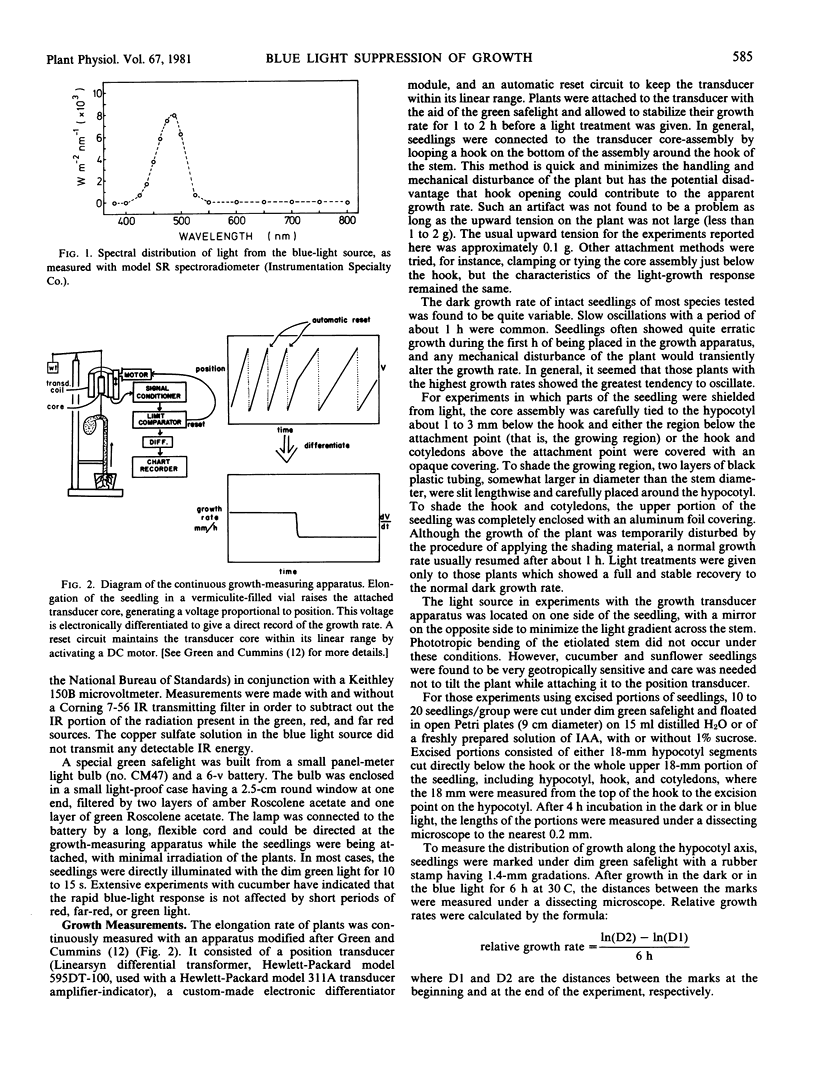
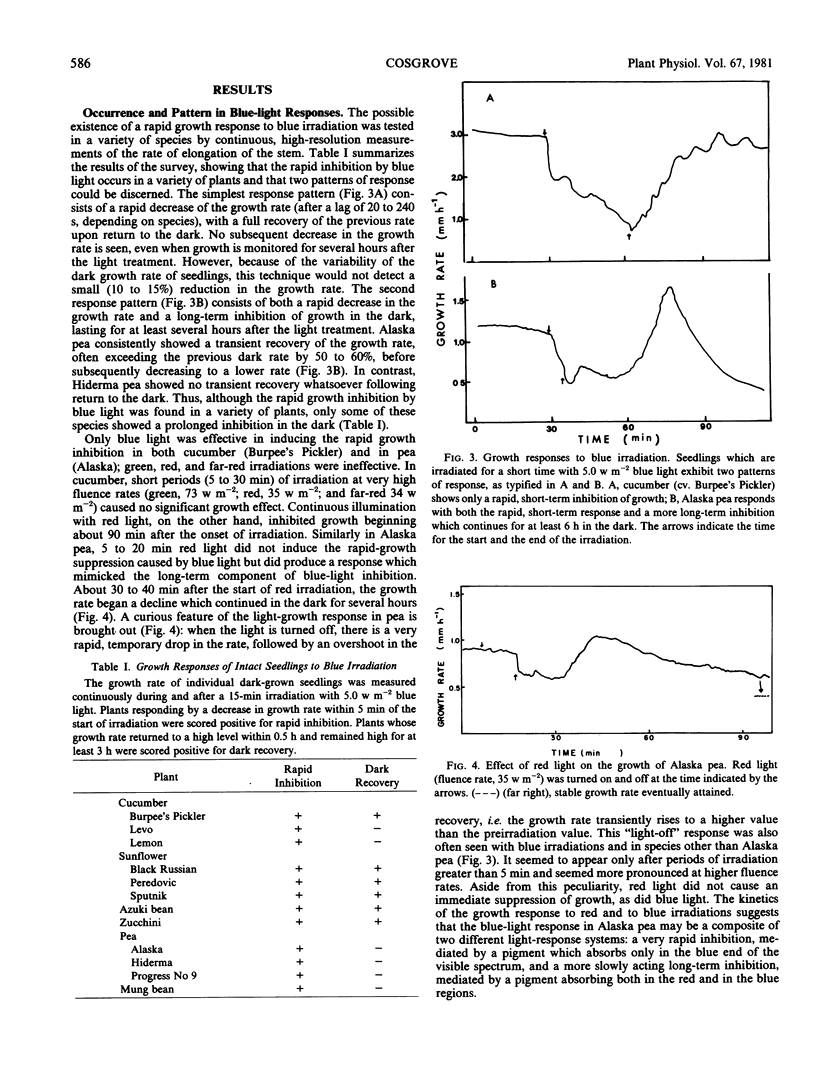
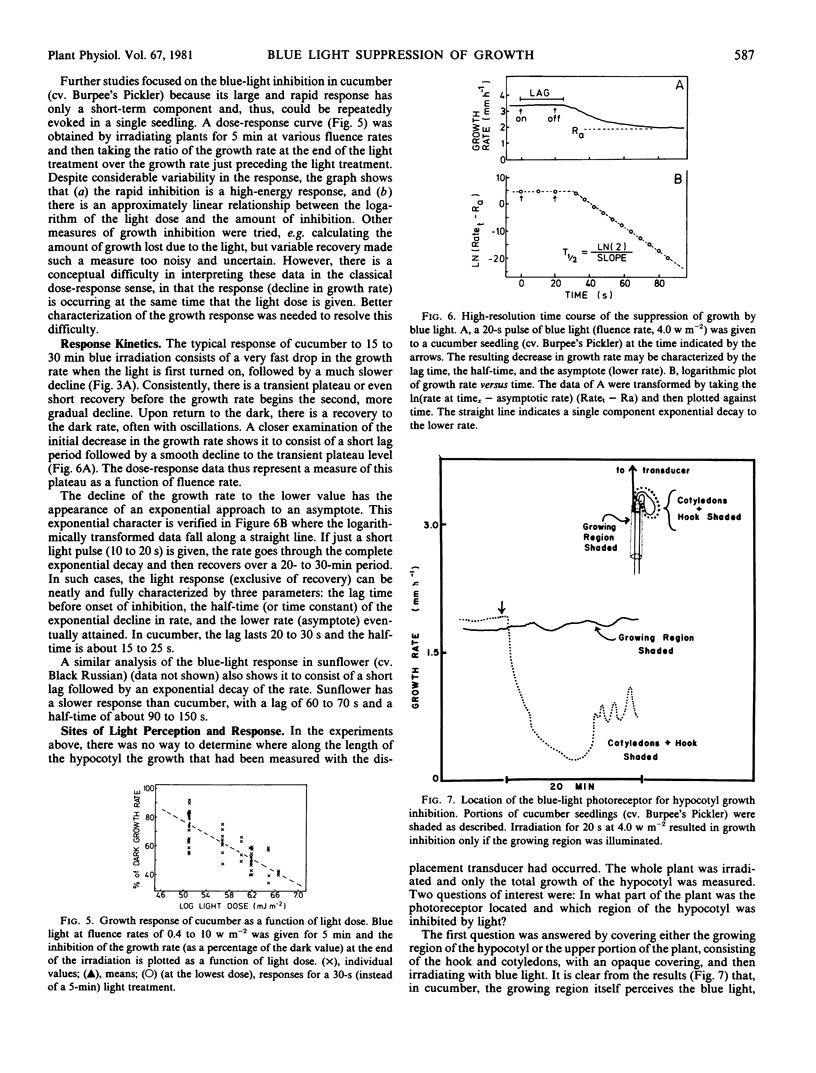
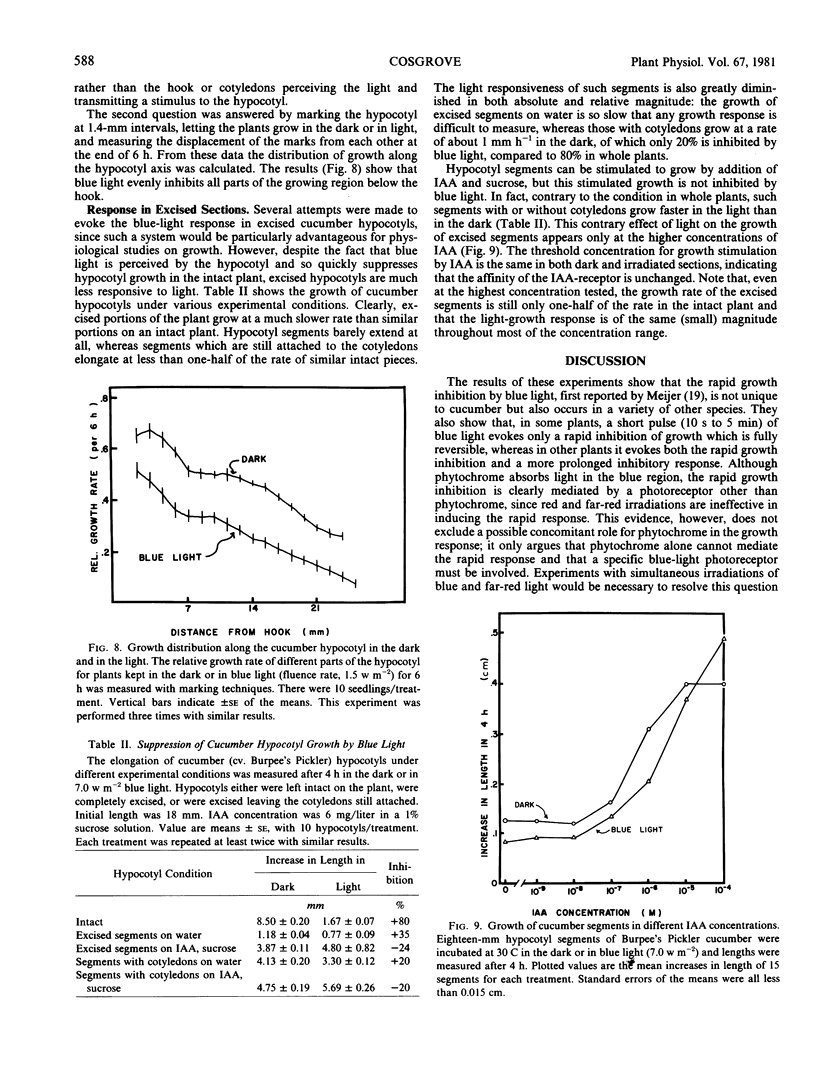

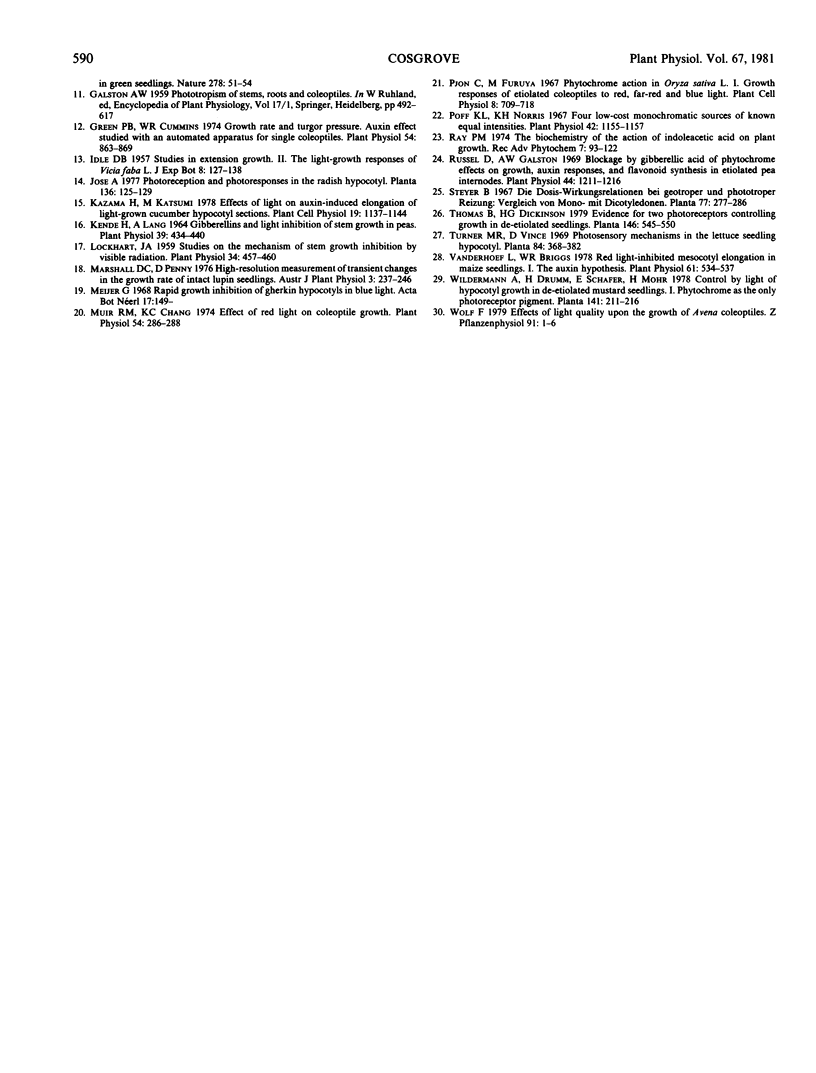
Selected References
These references are in PubMed. This may not be the complete list of references from this article.
- Cleland R. E. The control of cell enlargement. Symp Soc Exp Biol. 1977;31:101–115. [PubMed] [Google Scholar]
- Furuya M., Pjon C. J., Fujii T., Ito M. Phytochrome action in Oryza sativa L. 3. The separation of photoperceptive site and growing zone in coleoptiles, and auxin transport as effector system. Dev Growth Differ. 1969 Jun;11(1):62–76. doi: 10.1111/j.1440-169x.1969.00062.x. [DOI] [PubMed] [Google Scholar]
- Green P. B., Cummins W. R. Growth rate and turgor pressure: auxin effect studies with an automated apparatus for single coleoptiles. Plant Physiol. 1974 Dec;54(6):863–869. doi: 10.1104/pp.54.6.863. [DOI] [PMC free article] [PubMed] [Google Scholar]
- Kende H., Lang A. Gibberellins and Light Inhibition of Stem Growth in Peas. Plant Physiol. 1964 May;39(3):435–440. doi: 10.1104/pp.39.3.435. [DOI] [PMC free article] [PubMed] [Google Scholar]
- Lockhart J. A. Studies on the Mechanism of Stem Growth Inhibition by Visible Radiation. Plant Physiol. 1959 Jul;34(4):457–460. doi: 10.1104/pp.34.4.457. [DOI] [PMC free article] [PubMed] [Google Scholar]
- Muir R. M., Chang K. C. Effect of red light on coleoptile growth. Plant Physiol. 1974 Sep;54(3):286–288. doi: 10.1104/pp.54.3.286. [DOI] [PMC free article] [PubMed] [Google Scholar]
- Poff K. L., Norris K. H. Four low-cost monochromatic sources of known equal intensities. Plant Physiol. 1967 Aug;42(8):1155–1157. doi: 10.1104/pp.42.8.1155. [DOI] [PMC free article] [PubMed] [Google Scholar]
- Russell D. W., Galston A. W. Blockage by gibberellic Acid of phytochrome effects on growth, auxin responses, and flavonoid synthesis in etiolated pea internodes. Plant Physiol. 1969 Sep;44(9):1211–1216. doi: 10.1104/pp.44.9.1211. [DOI] [PMC free article] [PubMed] [Google Scholar]
- Vanderhoef L. N., Briggs W. R. Red Light-inhibited Mesocotyl Elongation in Maize Seedlings: I. The Auxin Hypothesis. Plant Physiol. 1978 Apr;61(4):534–537. doi: 10.1104/pp.61.4.534. [DOI] [PMC free article] [PubMed] [Google Scholar]


